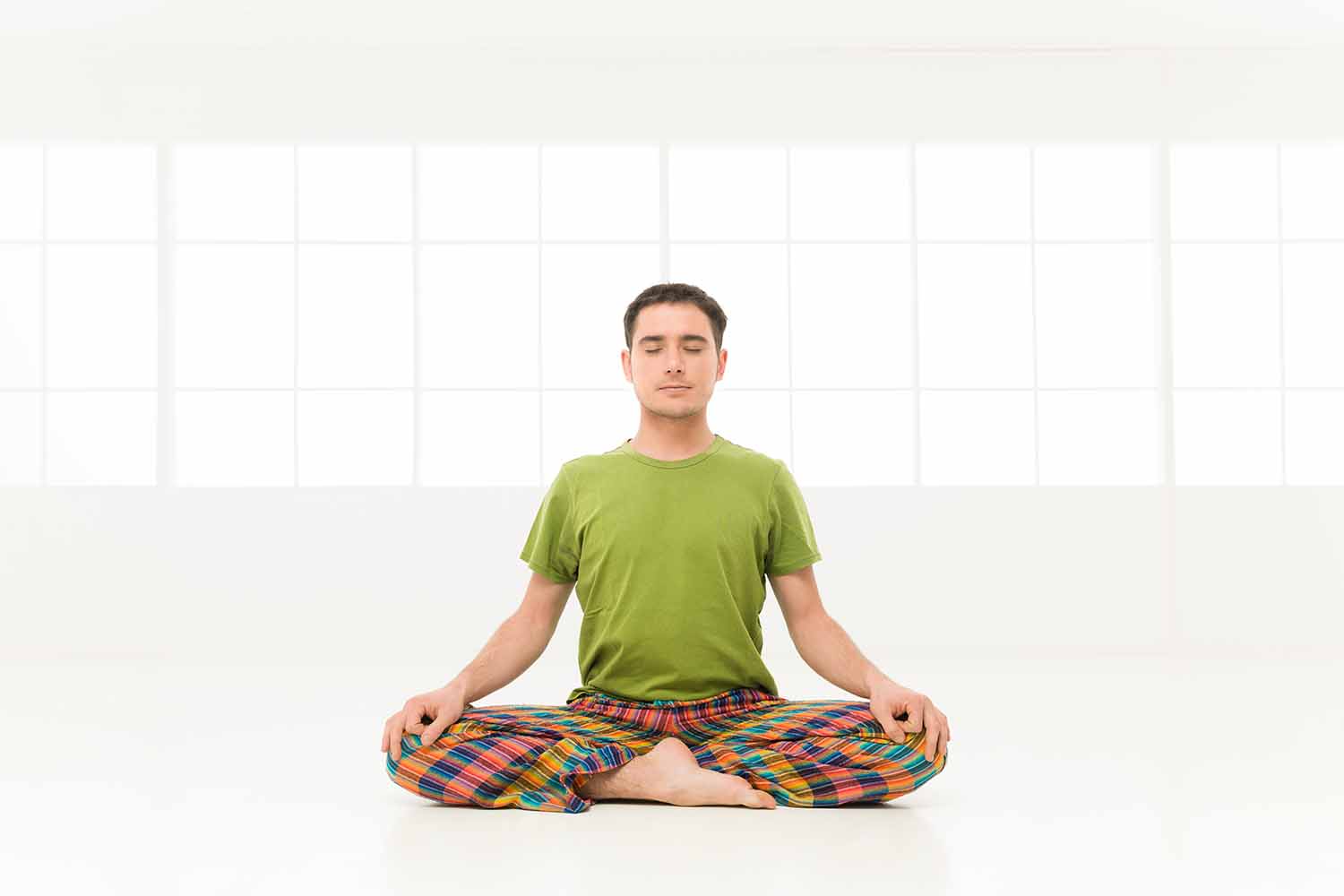Lotus Pose in yoga, known as Padmasana in Sanskrit, is a revered yoga asana that represents stillness, harmony, and the union of body and mind. This pose inspires practitioners to connect with their inner selves and cultivate serenity. In this comprehensive guide, we will explore the intricacies of Lotus Pose, from its basic instructions to advanced insights, and understand its role in yoga sequences.
Other Names for Lotus Pose Yoga Pose
Lotus Pose is recognized by various names in different yoga traditions and languages. Some common alternate names for Lotus Pose include:
- Padmasana (Sanskrit)
- Cross-Legged Meditation Pose
- Full Lotus Pose
How to do Lotus Pose in Yoga
Proper alignment is essential to mastering Lotus Pose. Here’s a step-by-step guide:
- Begin in a seated position on your mat with your legs extended straight in front of you.
- Bend your right knee and bring your heel toward your pelvis.
- Cross your right ankle over your left thigh, placing your right foot in the crease of your left hip.
- Bend your left knee and bring your heel toward your pelvis.
- Cross your left ankle over your right thigh, placing your left foot in the crease of your right hip.
- Gently slide your feet further up your thighs, tucking each ankle beneath the opposite knee.
- Place your hands on your knees with your palms facing up and your thumb and forefinger touching.
- Keep your spine straight and your head aligned with your spine.
- Breathe steadily and hold the pose for a few minutes, gradually increasing the duration.
Variations of Lotus Pose Yoga Pose
Lotus Pose offers variations to accommodate different levels of practice and preferences:
- Half Lotus Pose: Practice one leg at a time, leaving the other foot beneath the opposite thigh.
- Bound Lotus Pose: Interlace your fingers beneath your feet while in Lotus Pose for a deeper stretch.
Modifications for Lotus Pose Yoga Pose
Lotus Pose is accessible to most practitioners, but some modifications can enhance comfort or accommodate specific needs:
- Use a Cushion: Sit on a cushion or yoga block to lift your hips and reduce strain on the knees and hips.
- Knee Support: Place cushions or rolled-up yoga mats under your knees to alleviate pressure on the joints.
Contraindications for Lotus Pose in Yoga
While Lotus Pose is generally safe, there are a few contraindications and precautions to consider:
- Knee or Hip Injuries: Individuals with knee or hip injuries should approach Lotus Pose with caution and may need to modify or avoid it.
- Tight Hips: If you have tight hips, work on hip-opening poses before attempting Lotus Pose.
Tips to Improve Lotus Pose in Your Practice
- Warm-Up: Begin your practice with gentle hip-opening poses to prepare for Lotus Pose.
- Mindful Progression: Gradually work toward full Lotus Pose if it’s not accessible immediately. Start with Half Lotus Pose and build up to the full expression.
- Flexibility Training: Consistent stretching and flexibility exercises can help you achieve a more comfortable Lotus Pose over time.
- Meditation and Breathwork: Use Lotus Pose as a meditation seat to enhance your concentration and mindfulness.
What Muscles Does Lotus Pose Work?
Lotus Pose engages and stretches various muscle groups in the body:
- Hip Flexors: Opens and stretches the hip flexors.
- Groin: Increases flexibility in the groin area.
- Knees: Strengthens and stretches the knees.
Mental and Emotional Benefits of Lotus Pose in Yoga
Beyond its physical aspects, Lotus Pose offers numerous mental and emotional benefits:
- Meditation: Lotus Pose is an ideal seat for meditation, promoting inner peace and mindfulness.
- Focus: The pose enhances focus and concentration, making it an excellent choice for meditation and pranayama (breath control) practices.
- Emotional Balance: Lotus Pose encourages emotional balance and introspection.
Is Lotus Yoga Pose Suitable for Beginners?
Lotus Pose can be challenging for beginners, and it may take time to achieve the full expression. Starting with Half Lotus Pose is a great introduction.
Is Lotus Yoga Pose Suitable for Advanced Practitioners?
Advanced practitioners can deepen their meditation and pranayama practices in Lotus Pose and explore Bound Lotus Pose for added intensity.
How Does Lotus Pose Contribute to a Yoga Sequence or Flow?
Lotus Pose plays a significant role in yoga sequences and flows:
- Meditation: It serves as a stable and comfortable seat for meditation, allowing practitioners to connect with their inner selves.
- Pranayama: Lotus Pose is commonly used for pranayama practices, facilitating deep and controlled breathing.
- Transitions: Lotus Pose can act as a transitional pose, helping transition from one seated position to another.
- Mindfulness: The pose enhances mindfulness and introspection, which can be carried throughout the practice.
How Can I Deepen My Practice in Lotus Pose?
To deepen your practice in Lotus Pose, consider the following:
- Consistency: Regular practice of hip-opening poses and Lotus Pose will gradually enhance your flexibility and comfort in the pose.
- Alignment Focus: Pay close attention to alignment and ensure that your knees are safe and comfortable.
- Meditation Practice: Incorporate meditation and breathwork into your Lotus Pose practice to enhance mental focus and tranquility.
Common Mistakes in Teaching Lotus Yoga Pose
To be an effective yoga teacher, it’s crucial to avoid common teaching mistakes, including:
- Inadequate Hip Warm-Up: Neglecting to include hip-opening poses or stretches at the beginning of the class can make Lotus Pose uncomfortable for students.
- Pushing for Full Expression: Encouraging students to push themselves into full Lotus Pose too soon can lead to discomfort and potential injuries.
- Neglecting Knee Safety: Failing to emphasize the importance of safe knee positioning and alignment can lead to discomfort and potential strain on the joints.
- Insufficient Modification Options: Not offering modifications for students who cannot comfortably practice Lotus Pose can exclude individuals with tight hips or injuries.
- Limited Focus on Meditation: Lotus Pose is often used for meditation, and teachers should emphasize its role in enhancing mindfulness and concentration.
In conclusion, Lotus Pose (Padmasana) is a revered yoga asana that represents stillness, harmony, and the union of body and mind. It offers numerous physical, mental, and emotional benefits, making it suitable for practitioners of all levels. Whether you’re a beginner or an advanced practitioner, focusing on alignment, variations, and the meditative aspects of this pose can deepen your experience and enhance its role in your yoga journey. Through mindfulness and proper guidance, Lotus Pose can empower you to find stillness and inner harmony within your practice.
Namaste.
What does the Lotus Pose do?
The Lotus Pose, also known as Padmasana, promotes physical stability, enhances flexibility in the hips and knees, and supports proper spinal alignment. Commonly used in Hatha Yoga and meditation practices, it helps calm the mind, deepen breathing, and prepare the body for prolonged seated meditation.
Who should not do the Lotus Pose?
People with knee, hip, or ankle injuries should not do the Lotus Pose, also known as Padmasana. The posture places intense pressure on the joints, making it unsuitable for beginners or those with limited flexibility. Practitioners of yoga styles like Hatha or Ashtanga should ensure proper preparation and alignment when attempting this pose.
How long can you hold lotus position?
You can hold lotus position, or Padmasana, for several minutes to over an hour, depending on flexibility, hip mobility, and experience with yoga or meditation. Advanced practitioners of Hatha Yoga and Vipassana meditation commonly sustain the pose during extended sessions for stability and focus.

